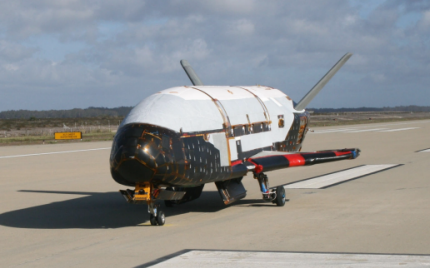Air Force's secretive unmanned shuttle to use NASA's hangars
The X-37B unmanned mini-shuttle, which just returned after 22 months in space, will use former shuttle processing bays.

NASA said Oct. 8 the Air Force has agreed to use former space shuttle hangars at the Kennedy Space Center to process future flights of the service's secretive X-37B unmanned mini-shuttle.
The Orbiter Processing Facility was previously used during NASA's space shuttle program. Before that, the facilities were used to stack the three stages of the mighty Saturn V rocket that took humans to the moon. NASA has slowly been transitioning the huge facility at Cape Canaveral that is part of the space agency's Vehicle Assembly Building to handle multiple spacecraft.
The agreement with the Air Force "ensures the facilities will again be used for their originally-intended purpose—processing spacecraft," the space agency said.
United Launch Alliance, the Boeing-Lockheed Martin joint venture, has launched three X-37B space planes on long duration missions. Boeing Co.'s Phantom Works is the Air Force prime contractor for the spacecraft. The third X-37B, also known as the X-37 Orbital Test Vehicle, was launched in December 2012 and is apparently still orbiting the Earth. (UPDATE: The X-37B was expected to land at Vandenberg Air Force Base, Calif., some time on Oct. 14, after a little more than 22 months in space.)
Along with processing the X-37B for launch, the Air Force also has been conducted landing tests on the former NASA shuttle runway at Cape Canaveral, the space agency said.
NASA said Boeing is performing construction upgrades at the Kennedy processing facilities on behalf of the Air Force. Those upgrades are expected to be completed by December.
According to Boeing, the Air Force's Rapid Capabilities Office is the "customer" for the X-37B Orbital Test Vehicle. The agency describes the X-37B as "the newest and most advanced re-entry spacecraft." The mini-shuttle is designed for long duration test flights designed to wring out advanced guidance, navigation and control, thermal protection, avionics and other advanced systems.
Upon command from a ground controller, the spacecraft autonomously reenters the atmosphere and lands on a runway.



